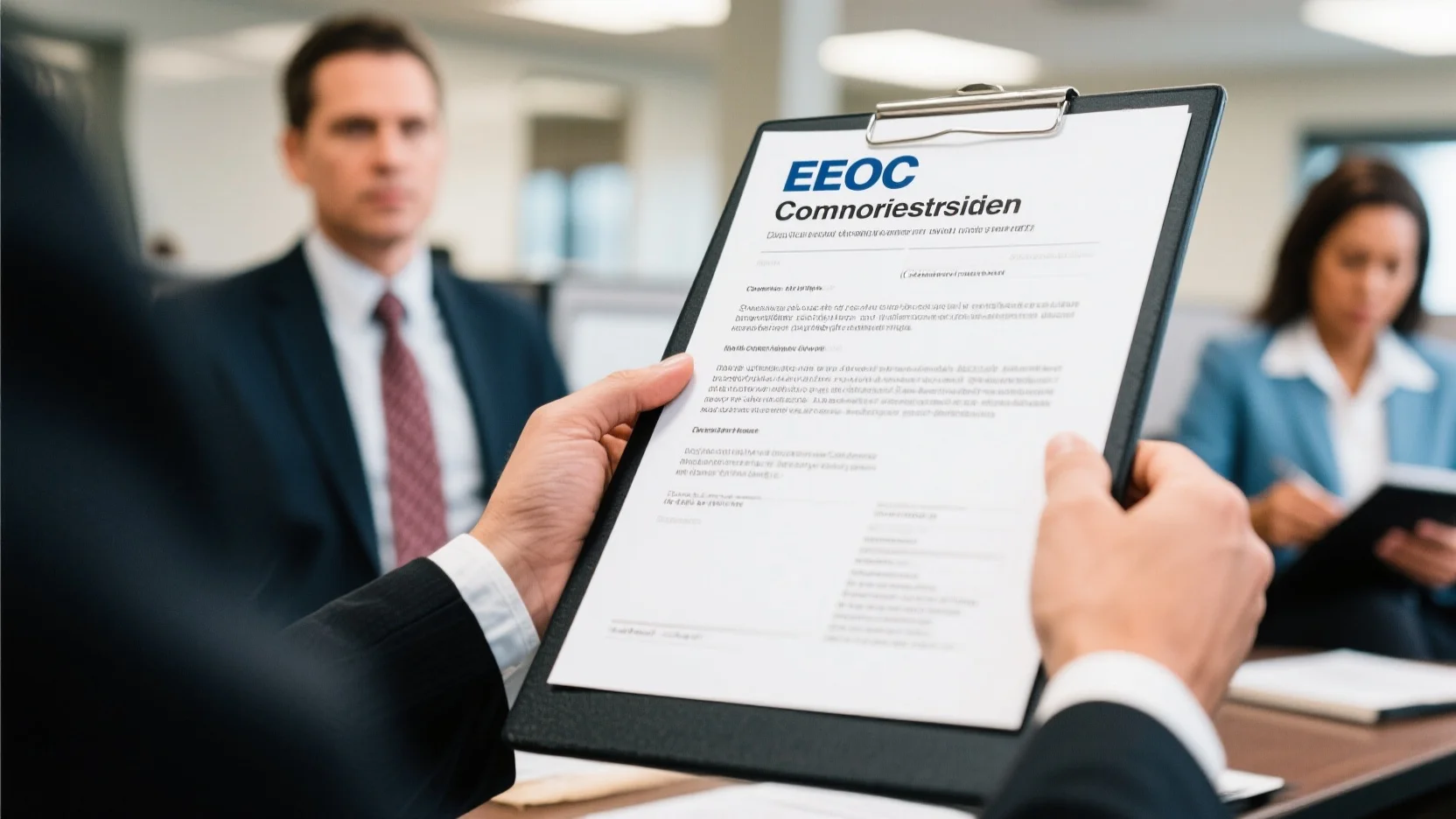Image Source: pexels
Workplace discrimination laws: employee rights and remedies exist to protect employees from unfair treatment. These laws ensure that everyone, regardless of their background, has equal opportunities at work. For example, federal laws like Title VII and the ADA prohibit discrimination based on race, disability, or gender. Yet, discrimination remains widespread. In 2022, the EEOC received 73,485 new charges, a 20% increase from the previous year. Witnessing this rise, I believe understanding your rights is crucial. Knowing how to act empowers you to challenge injustice and demand accountability.
Discrimination doesn’t just harm individuals—it damages workplace culture and productivity. Protecting your rights benefits everyone.
Key Takeaways
- Learn your rights from laws like Title VII and ADA. These laws stop unfair treatment due to race, gender, age, or disability.
- Write down any unfair treatment you face. Note dates, times, and people who saw it to make your case stronger.
- Tell HR or your boss about unfair treatment quickly. A clear report can help make the workplace better for all.
Understanding Workplace Discrimination Laws
Federal Laws Protecting Employees (e.g., Title VII, ADA, ADEA)
Federal laws play a vital role in protecting employees from discrimination. I often remind people that these laws are the foundation of workplace fairness. For example, Title VII of the Civil Rights Act prohibits discrimination based on race, color, religion, national origin, or sex. It also protects employees from retaliation when they report discrimination. The Age Discrimination in Employment Act (ADEA) safeguards workers aged 40 and older, while the Americans with Disabilities Act (ADA) ensures equal opportunities for individuals with disabilities. These laws require employers to provide reasonable accommodations and protect employees from retaliation.
Here’s a quick overview of these key federal laws:

| Law | Key Provisions |
|---|---|
| Title VII | Prohibits discrimination based on race, color, religion, national origin, or sex; includes protections against retaliation. |
| ADEA | Forbids age discrimination against individuals 40 and older; includes protections against retaliation. |
| ADA | Prohibits discrimination against qualified individuals with disabilities; requires reasonable accommodations; includes protections against retaliation. |
State and Local Protections
State and local laws often go beyond federal protections. I’ve seen how these laws can address gaps in federal coverage. For instance, federal laws typically apply to employers with 15 or more employees. However, some state laws, like those in Wisconsin, apply to businesses with just one employee. Local laws may also offer additional protections, such as covering discrimination based on marital status or political affiliation. These laws provide employees with more options to seek justice.
- Federal laws cover discrimination based on age (40+), disability, genetic information, national origin, sex, race, color, and religion.
- State laws can extend protections, such as applying to smaller employers or covering additional characteristics.
- Local laws may include unique protections and remedies, offering broader coverage than federal or state laws.
Characteristics Protected Under the Law
Workplace discrimination laws protect a wide range of characteristics. I believe it’s essential to know what these are to recognize when your rights are violated. Commonly protected characteristics include:
- Race and color
- Religion
- Sex, including pregnancy, sexual orientation, and gender identity
- National origin or ethnicity
- Age (40 or older)
- Disability
- Genetic information, including family medical history
Understanding these protections empowers you to stand up against unfair treatment. Workplace Discrimination Laws: Employee Rights and Remedies exist to ensure everyone has a fair chance to succeed.
Identifying Workplace Discrimination
Image Source: unsplash
What Is Workplace Discrimination?
Workplace discrimination happens when an employee faces unfair treatment based on protected characteristics like race, gender, or disability. I’ve seen how this can create a toxic environment, making employees feel undervalued and powerless. Discrimination can occur during hiring, promotions, or even daily interactions. It’s not always obvious, but subtle biases can have a lasting impact. Recognizing these behaviors is the first step toward addressing them.
Discrimination isn’t just unfair—it’s illegal. Knowing your rights helps you stand up against it.
Examples of Discriminatory Practices
Discrimination can take many forms. I’ve heard stories of qualified candidates being overlooked for promotions because of their age or gender. Some employees face unequal pay for the same work. Others are excluded from important meetings or projects due to their race or ethnicity. Here are some common examples:
- Denying promotions or raises based on gender or age.
- Refusing to hire someone due to their disability.
- Assigning less desirable tasks to employees of a specific race.
- Making offensive jokes about someone’s religion or sexual orientation.
These actions harm individuals and organizations. They lower morale, reduce productivity, and increase turnover rates. No one should have to endure such treatment.
Harassment and Retaliation as Discrimination
Harassment and retaliation are also forms of workplace discrimination. Harassment includes unwelcome comments or actions that create a hostile work environment. For example, I’ve seen cases where employees were bullied for their gender identity or religion. Retaliation happens when employers punish workers for reporting discrimination. This could mean demotions, pay cuts, or even termination.
The effects of harassment and retaliation go beyond the workplace. They can lead to stress, anxiety, and even physical health problems like heart issues. Organizations also suffer. Productivity drops, and turnover increases. Addressing these issues benefits everyone involved.
Taking action against harassment and retaliation isn’t just about protecting yourself—it’s about creating a better workplace for all.
Employee Rights and Protections
Right to Equal Treatment in the Workplace
Every employee deserves equal treatment at work. I’ve seen how unfair practices can destroy morale and productivity. Workplace discrimination laws ensure that employers treat everyone fairly, regardless of race, gender, or other protected characteristics. These laws prohibit favoritism, unequal pay, and biased hiring practices. Equal treatment isn’t just a legal requirement—it’s essential for fostering a positive work environment.
Training programs can help employees understand their rights. I recommend programs that address unconscious bias and promote diversity. These initiatives create awareness and encourage accountability. Employees who know their rights are more likely to stand up against injustice.
Right to Report Discrimination Without Fear of Retaliation
Reporting discrimination takes courage. Unfortunately, many employees fear retaliation. Common forms of retaliation include termination, demotion, or negative evaluations. I’ve heard stories of employees being ostracized by co-workers or blackballed in their industry. These actions are illegal under workplace discrimination laws.
Employees must feel safe when reporting issues. Employers should establish clear reporting channels and protect whistleblowers. Fear of retaliation shouldn’t stop anyone from seeking justice. Remember, standing up for your rights benefits everyone in the workplace.
Right to Reasonable Accommodations
Employees with disabilities have the right to reasonable accommodations. For example, the ADA requires employers with 15 or more employees to provide accommodations unless it causes undue hardship. Some state laws extend this requirement to smaller businesses.
| Requirement | Description |
|---|---|
| Employer Size | Employers with 15+ employees must provide accommodations under the ADA. |
| State Laws | Some states extend this to smaller employers. |
| Title I of ADA | Requires accommodations unless they cause undue hardship. |
Accommodations can include modified work schedules, assistive devices, or accessible facilities. These adjustments enable employees to perform their jobs effectively. I believe every workplace should prioritize inclusivity and accessibility.
Remedies for Workplace Discrimination
Image Source: pexels
Filing Complaints with the EEOC or State Agencies
Filing a complaint is the first step toward justice. I always recommend starting with the Equal Employment Opportunity Commission (EEOC) or your state agency. The process is straightforward and ensures your concerns are heard. Here’s how it works:
- Determine Eligibility: Confirm that your experience qualifies as discrimination under EEOC laws.
- File a Charge: Submit a Charge of Discrimination through the EEOC Public Portal or visit a local office.
- Provide Necessary Information: Bring documents and details that support your case.
- Consult with EEOC Staff: Discuss your situation with an EEOC representative to evaluate your claim.
- Follow Up: Stay aware of deadlines and any additional steps after filing your charge.
Acting quickly is crucial. The EEOC enforces strict time limits, so don’t delay. Filing a complaint not only protects your rights but also holds employers accountable.
Mediation and Settlements
Mediation offers a faster, less stressful alternative to court. I’ve seen many cases resolved successfully through this process. Most workplace discrimination claims settle out of court, with average settlements around $40,000. In some cases, settlements can reach $300,000, depending on the employer’s size. Mediation allows both parties to negotiate a fair resolution without the expense of a trial.
This approach benefits everyone. Employees receive compensation, and employers avoid lengthy legal battles. With a 95% success rate in EEOC district court cases, mediation often leads to positive outcomes. If you’re considering this route, I encourage you to explore it fully.
Legal Actions and Compensation
When mediation fails, legal action becomes necessary. I understand this can feel overwhelming, but it’s often the only way to achieve justice. Unfortunately, statistics show that 82% of workplace discrimination cases result in no relief for complainants. However, don’t let this discourage you. A strong case with proper documentation improves your chances of success.
Common outcomes include monetary compensation, reinstatement, or policy changes within the organization. While less than 2% of cases confirm discrimination, pursuing legal action sends a powerful message. It shows that unfair treatment won’t go unchallenged. If you believe in your case, fight for your rights. Justice is worth the effort.
Taking action under workplace discrimination laws isn’t just about compensation—it’s about creating a fairer workplace for everyone.
Steps to Address Workplace Discrimination
Documenting Discriminatory Incidents
When facing workplace discrimination, documenting incidents is the first step toward justice. I always advise keeping detailed records of every discriminatory remark or action. Include specific details like dates, times, locations, and the individuals involved. For example, if a manager denies you a promotion due to your age, note the exact conversation and circumstances.
Gather evidence such as emails, text messages, or performance evaluations that support your claims. Witnesses can also strengthen your case. Ask colleagues who observed the incident to provide their contact information. Maintaining a personal record ensures you have a clear timeline of events, which is crucial when filing a complaint.
Tip: Consistent documentation not only strengthens your case but also demonstrates your commitment to addressing the issue professionally.
Reporting to HR or Management
Once you’ve documented incidents, report them to HR or management. I know this can feel intimidating, but it’s a necessary step. Start by assessing how you’ve been treated unfairly. Research your company’s policies and the time limits for filing a complaint.
Follow these steps to ensure your report is effective:
- Collect all relevant records and documents, including your journal of incidents.
- File a formal complaint with HR or your supervisor.
- Stay alert to any retaliatory actions, such as changes in your responsibilities or treatment.
A clear and professional report ensures your concerns are taken seriously. Remember, reporting discrimination isn’t just about protecting yourself—it’s about creating a fairer workplace for everyone.
Seeking Legal Assistance and Filing a Complaint
If internal reporting doesn’t resolve the issue, seek legal assistance. I recommend consulting an attorney or legal services representative to understand your rights. They can guide you through filing a complaint with the Equal Employment Opportunity Commission (EEOC) or a state agency.
The process involves submitting a Charge of Discrimination and providing supporting evidence. Acting quickly is essential, as strict deadlines apply. Legal professionals can help you navigate this process and protect your interests.
Taking legal action may feel daunting, but it’s often the only way to hold employers accountable. Workplace Discrimination Laws: Employee Rights and Remedies exist to ensure fairness. By standing up for your rights, you contribute to a more inclusive workplace for everyone.
Workplace Discrimination Laws: Employee Rights and Remedies protect employees and promote fairness. I urge you to act if you face discrimination. Document incidents, report them, and seek legal help when needed. Professional advice ensures your rights are upheld. Together, we can create workplaces where everyone thrives.
FAQ
What should I do if my employer retaliates after I report discrimination?
Retaliation is illegal. File a complaint with the EEOC immediately. Document all retaliatory actions and consult a legal professional to protect your rights.
How long do I have to file a workplace discrimination complaint?
You must file within 180 days of the incident. Some states extend this to 300 days. Act quickly to avoid missing deadlines.
Can I file a complaint anonymously?
No, the EEOC requires your identity to process the complaint. However, they protect your confidentiality during the investigation to prevent further retaliation.
Tip: Always consult an attorney for personalized advice on your case.





